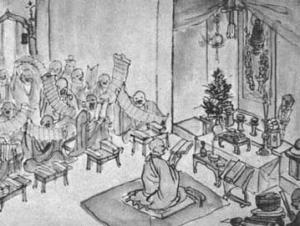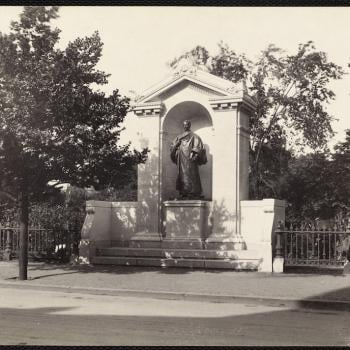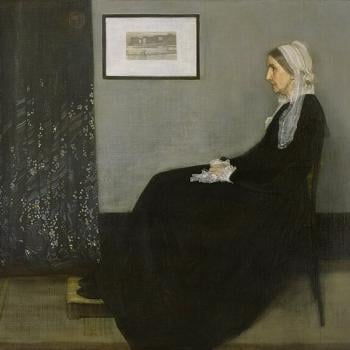I was at a meeting with practitioners of several spiritual traditions where a Muslim asked me what was my text? He assumed there must be something comparable to the Koran or the Bible in either its traditional Jewish form or its expanded Christian version.
As a Buddhist of a rational turn I was at a loss as to what to say. In the moment I replied that while there is a voluminous sacred literature within Buddhism and while texts are important to us, we within the Zen traditions have nothing comparable to the Koran or Bible in either version.
Then with those gigantic caveats named two, the Platform Sutra of the Sixth Ancestor, and the Heart Sutra. There are many others, of course. But, those were the two that were the closest I could come to in that moment for some primary spiritual text thing. At least for me.
And of all the possibilities within that question, it is the Heart Sutra that most touches my heart and serves as a textual touchstone for my spiritual life. It is in fact the text that if there were to be only one for me as a Zen Buddhist that fits the bill. I believe it isn’t possible to understand the Zen way without some reference to the Prajnaparamita cycle, and in particular to the Heart Sutra.
Its full title is Prajnaparamitahrdaya, or The Heart of the Perfection of Wisdom. It is one of about forty books in the cycle, and together with the Diamond Sutra has had a considerable influence on the Mahayana, and in particular on Zen Buddhism. The writing of the cycle begins about a hundred years before the common era and concludes as late as the sixth century. The Heart Sutra itself is difficult to date. Edward Conze puts it’s composition at approximately 350 CE, although this is disputed and arguments are made for it being as early as the first century of the common era.
There are two versions, a shorter and a longer one. The consensus view is that the shorter is the older of the two, and is the text mostly commonly referenced. The versions reproduced below are all of that shorter version.
Here are some reflections on that primary text…
Eleven Talks by Zen Teachers on the Heart Sutra
Domyo Burk on the Heart Sutra, Part one and Part two
James Ford & Josh Bartok on the Heart Sutra
James Ford on the Heart Sutra
Joan Halifax on the Heart Sutra
Enkyo Pat O’Hara Ten Talks on the Heart Sutra
Seung Sahn on the Heart Sutra
Sheng Yen on the Heart Sutra
Jisho Warner on the Heart Sutra
Glenn Taylor Webb on the Heart Sutra
Sojun Mel Weitsman on the Heart Sutra
Michael Mugaku Zimmerman on the Heart Sutra, Part one and Part two
A Selection of Translations & Paraphrases of the Heart Sutra
Heart of Great Perfect Wisdom Sutra
Soto School Scriptures for Daily Service & Practice
Avalokiteshvara Bodhisattva, when deeply practicing prajna paramita, clearly saw that all five aggregates are empty and thus relieved all suffering.
Shariptutra, form does not differ from emptiness, emptiness does not differ form form. Form itself is emptiness, emptiness itself form. Sensations, perceptions, formations, and consciousness are also like this.
Shariputra, all dharma are marked by emptiness; they neither arise nor cease, are neither defiled nor pure, neither increase nor decrease. Therefore, given emptiness, there is no form, no sensation, no perception, no formation, no consciousness; no eyes, no ears, no nose, no tongue, no body, no mind; no sight, no sound, no no smell, no tase, no touch, no object of mind; no realm of sight… no realm of mind consciousness.
There is neither ignorance nor extinction of ignorance… neither old age and death, nor extinction of old age and death; no suffering, no cause, no cessation, no path no knowledge and no attainment.
With nothing to attain a bodhisattva relies on prajna paramita, and thus the mind is without hindrance. Without hindrance, there is no fear.
Far beyond al inverted views, one realizes nirvana. All buddhas of past, present, and future rely on prajna paramita and thereby attain unsurpassed, complete, perfect enlightenment.
Therefore, know the prajna paramita as the great miraculous mantra, the great bright mantra, the supreme mantra, the incomparable mantra, which removes all suffering and is true, not false. Thereore we proclaim the prajna paramita mantra, the mantra that says:
Gate Gate Paragate Parasamgate Bodhis Svaha
The Compassionate Heart of Wisdom
(a rendering of the Heart Sutra, by James Ishmael Ford With Josh Bartok)
When the Heart of Compassion walked through the gate of Wisdom, she looked into the body of the world and each of us, seeing that each of us and the world itself is boundless.
And with this all suffering vanished.
Dear ones, all things are boundless; and the boundless is nothing other than all things. Everything in itself is boundlessness; boundlessness is all things. This is true of our bodies, feelings, experiences, perceptions, and of consciousness itself.
Dear ones, the stuff of the universe is boundless. It is not born and it does not die. It is not impure or impure. It neither increases nor diminishes.
Within boundlessness there are no sense organs, no objects to sense, and no field of experience; no ignorance and thus no ending of ignorance; no old age and death and thus no ending of old age and death. There is no suffering and thus no causes of suffering; there is no path to follow and no wisdom to attain.
Understanding this boundlessness, the pure-hearted one is free. Without entanglements, the true person of the Way is not afraid.
This is the pure and unexcelled Way. All the sages of past, present, and future attain to this truth and find freedom.
This truth becomes the great mantra, supreme and unexcelled;
and this truth removes all suffering.
Gone, gone, gone beyond!
Completely gone beyond!
Blessings and blessings!
The Maha Prajna Paramita Hrdaya Sutra
Kwan Um School of Zen
Avalokitesvara Bodhisattva
when practicing deeply the Prajna Paramita
perceives that all five skandhas are empty
and is saved from all suffering and distress.
Shariputra,
form does not differ from emptiness,
emptiness does not differ from form.
That which is form is emptiness,
that which is emptiness form.
The same is true of feelings,
perceptions, impulses, consciousness.
Shariputra,
all dharmas are marked with emptiness;
they do not appear or disappear,
are not tainted or pure,
do not increase or decrease.
Therefore, in emptiness no form, no feelings,
perceptions, impulses, consciousness.
No eyes, no ears, no nose, no tongue, no body, no mind;
no color, no sound, no smell, no taste, no touch,
no object of mind;
no realm of eyes
and so forth until no realm of mind consciousness.
No ignorance and also no extinction of it,
and so forth until no old age and death
and also no extinction of them.
No suffering, no origination,
no stopping, no path, no cognition,
also no attainment with nothing to attain.
The Bodhisattva depends on Prajna Paramita
and the mind is no hindrance;
without any hindrance no fears exist.
Far apart from every perverted view one dwells in Nirvana. In the three worlds
all Buddhas depend on Prajna Paramita
and attain Anuttara Samyak Sambodhi.
Therefore know that Prajna Paramita
is the great transcendent mantra,
is the great bright mantra,
is the utmost mantra,
is the supreme mantra
which is able to relieve all suffering
and is true, not false.
So proclaim the Prajna Paramita mantra,
proclaim the mantra which says:
gate gate paragate parasamgate bodhi svaha
gate gate paragate parasamgate bodhi svaha
gate gate paragate parasamgate bodhi svaha.
The Insight that Brings Us to the Other Shore
Thich Nhat Hanh
Avalokiteshvara
while practicing deeply with
the Insight that Brings Us to the Other Shore,
suddenly discovered that
all of the five Skandhas are equally empty,
and with this realisation
he overcame all Ill-being.
“Listen Sariputra,
this Body itself is Emptiness
and Emptiness itself is this Body.
This Body is not other than Emptiness
and Emptiness is not other than this Body.
The same is true of Feelings,
Perceptions, Mental Formations,
and Consciousness.
“Listen Sariputra,
all phenomena bear the mark of Emptiness;
their true nature is the nature of
no Birth no Death,
no Being no Non-being,
no Defilement no Purity,
no Increasing no Decreasing.
“That is why in Emptiness,
Body, Feelings, Perceptions,
Mental Formations and Consciousness
are not separate self entities.
The Eighteen Realms of Phenomena
which are the six Sense Organs,
the six Sense Objects,
and the six Consciousnesses
are also not separate self entities.
The Twelve Links of Interdependent Arising
and their Extinction
are also not separate self entities.
Ill-being, the Causes of Ill-being,
the End of Ill-being, the Path,
insight and attainment,
are also not separate self entities.
Whoever can see this
no longer needs anything to attain.
Bodhisattvas who practice
the Insight that Brings Us to the Other Shore
see no more obstacles in their mind,
and because there
are no more obstacles in their mind,
they can overcome all fear,
destroy all wrong perceptions
and realize Perfect Nirvana.
“All Buddhas in the past, present and future
by practicing
the Insight that Brings Us to the Other Shore
are all capable of attaining
Authentic and Perfect Enlightenment.
“Therefore Sariputra,
it should be known that
the Insight that Brings Us to the Other Shore
is a Great Mantra,
the most illuminating mantra,
the highest mantra,
a mantra beyond compare,
the True Wisdom that has the power
to put an end to all kinds of suffering.
Therefore let us proclaim
a mantra to praise
the Insight that Brings Us to the Other Shore.
Gate, Gate, Paragate, Parasamgate, Bodhi Svaha!
Gate, Gate, Paragate, Parasamgate, Bodhi Svaha!
Gate, Gate, Paragate, Parasamgate, Bodhi Svaha!”
And finally that last mantra…













